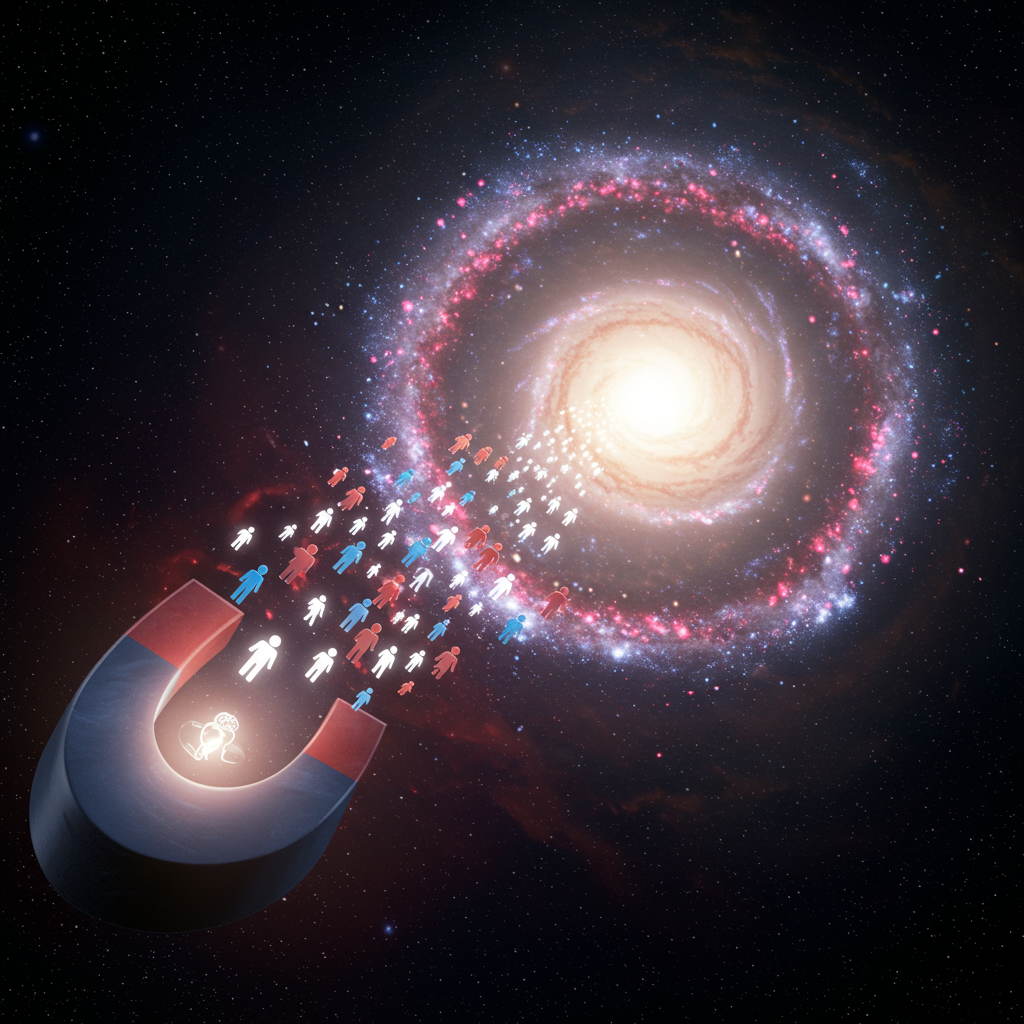
So many founders make the same mistake. They pour all their energy into building a product, then look around and wonder why nobody's using it. It's like building a beautiful house in the middle of nowhere and then being surprised that nobody visits.
The typical response? Blame marketing. Suddenly, it's a "distribution problem." But it's almost never a distribution problem. It’s a desirability problem. You can shout from the rooftops about your amazing product, buy all the ads in the world, but you can't force people to want something they don't need. You can’t brute force demand.
Here’s the shift you need to make: Stop chasing users. Start designing gravity.
Think about it. Gravity works by pull. It happens when you build around these core elements:
- A Clear Problem: People need to *know* they have a problem.
- Real Pain: That problem needs to be *painful* enough to motivate them to look for a solution.
- Obvious Urgency: They need to feel the *need* to solve it now.
It's the difference between pushing a boulder uphill – exhausting, frustrating, and frankly, unlikely to succeed – and getting pulled downhill, where momentum is on your side.
The best growth loops actually start before you write a single line of code. It’s about asking, "What do people already want?" Not "How are we going to sell this thing we built?" That subtle change in perspective is everything.
And honestly, this matters more than ever now. The world's drowning in content, product velocity is basically infinite. What you ship – the specific features, the UI – actually matters less than why people want it. We're not short on products; we're short on clarity, traction, and that irresistible pull.
Imagine you're starting a dog walking business. You could build a fancy app with GPS tracking and online booking. That's the 'product first' approach. Or, you could spend a few weeks talking to dog owners at the local park. Find out their biggest frustrations: last-minute cancellations, unreliable walkers, not getting updates on their pup during the walk. Then you build a simple service addressing those specific pain points. Which one do you think will get more traction?
The goal is simple: Make your product the obvious solution to a problem your ideal customer is already desperately trying to solve.
Here’s a process you can follow right now:
- Identify your ideal customer: Be as specific as possible. What's their job, their age range, their biggest frustrations?
- Talk to them: Seriously, book calls. Go where they hang out online. Ask open-ended questions: "What's the hardest part about…?" "What are you currently using to solve this problem?" "What do you wish existed that doesn't?"
- Identify the core pain points: Look for patterns. What are they all complaining about? Which problems cause the most frustration?
- Design a solution that directly addresses those pain points: Focus on simplicity. Solve the core problem first. Don't get bogged down in features nobody asked for.
- Test your solution with your ideal customers: Get feedback early and often. Iterate based on what they tell you.
Better to spend 4 weeks talking to potential users than 4 months chasing them after you've built something nobody wants.
Speaking of building solutions, sometimes you need a flexible platform to bring your unique vision to life. That's where something like GraceBlocks can be incredibly helpful. It lets you build custom databases and workflows without needing to code everything from scratch. You can define your own data structures, automate processes with AI, and even integrate communication via email or SMS. It’s about having the freedom to create precisely what your users need, based on what you’ve learned they want. If you think of GraceBlocks as LEGO for business, the problem you discovered is the blueprint and the customer interviews are your inspiration.



Comments
Post a Comment